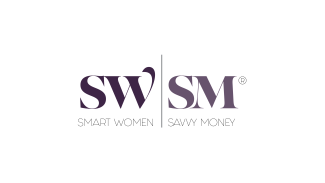
Health Savings Accounts – What You Need to Know for 2022
It’s that time of year again? Yes—for many of you, it’s open enrollment time!
Probably one of the most overlooked employee benefits, with both tremendous tax advantages and the potential to serve as a retirement planning tool, is the Health Savings Account (HSA). Not only are all contributions to an HSA tax-deductible, but withdrawals are tax-free provided they are used for qualified medical expenses.
But wait, there’s more...! Earnings on these funds can also be tax-free, and there’s no “use it or lose it” provision—allowing you to build up an additional source of funds that could potentially be used for future health care expenses or as a source of income in your retirement years. It’s a Triple Life and Tax-Planning Resource. So, there are three powerful reasons to get on board with an HSA. Want to learn more? Let’s start with the basics.
What’s the difference between FSA and HSA?
A lot of people think Flexible Spending Accounts (FSAs) and Health Savings Accounts (HSAs) are about the same or are not aware of HSA accounts. While there are some common features, they are in fact very different kinds of accounts. Both are funded with pre-tax contributions, funds can be withdrawn tax-free to cover qualified medical expenses, and your employer can provide a match—but that’s where the similarities end.
Unlike FSAs, HSAs are only available in conjunction with a qualified HDHPs (High Deductible Health Plans). For 2021, the health plan deductible for singles, must be at least $1400 and $2800 for family coverages. While the rules are typically subject to change annually, for 2022 the minimum deductible rules for singles and family plans will remain the same. Here’s the really important federal tax benefit you need to know: just like FSA accounts, contributions to HSA accounts are tax deductible but allow for much higher deposits! For 2021, the maximum contribution to the HSA is $3600 and will rise to $3650 in 2022. For family coverage, the maximum contribution for 2021 is $7200, but will rise to $7300 in 2022. And guess what? Whether you use that money in the current year – it doesn’t matter- If you don’t use it, you don’t lose it. Also, unlike IRAs or other tax-deferred accounts, there are no income threshold limits. This feature makes HSAs especially attractive to high earners, who may have maxed out their contributions for their employer provided retirement plan and are looking for other ways to cut their tax bill. Additionally, for those 55 and older, you can “step up” your contribution with a catch-up provision, by adding an additional $1,000.
Furthermore, your employer can match your HSA contributions, just like they do when matching contributions to your 401(k) plan. Finally, HSAs plans often offer investment options, which differs from plan to plan, but most often they can be invested in bank-type instruments or mutual funds.
What are the benefits of having an HSA?
Besides providing a pool of tax-free money for medical expenses, HSA contributions can allow you to increase the amount you’re saving for retirement and seriously reduce your tax bill. The maximum contributions that individuals and families are allowed to make to an HSA typically changes with updates to the tax code each year. As noted prior, the catch-up provisions for older adults, usually between 55 and 65 years old, help to reduce their taxable income and that rule can be subject to increasing annually as well, however, for 2022, will remain the same amount of $1,000 catch up. Be sure to ask your plan administrator or financial advisor to make sure you are contributing as much as you can under the current tax code.
Let’s walk through an example of how this could work. Let’s say you’re single, aged 40, and have maxed out your 401(k) contributions. You can enroll in an HDHP, sign up for an HSA, and sock away an additional $3600, further reducing your taxable income! If you are single and 55 or over and want to max out your contributions using the catch-up provision for the 401(k), you can use a catch-up provision for your HSA, too, and put away as much as $4600—driving down your taxable income even more.
How Do You Get an HSA?
First, enroll in a qualified HDHP. This is extremely important. Just because your health insurance plan has a high deductible doesn’t necessarily mean that it meets the requirements to be an HSA-qualified HDHP. Be sure to check with your insurance company or your employer to confirm the status of the plan before you sign up.
Next, decide how much you want to contribute. As described above, you can choose to fund your HSA up to the annual maximums. Because the contributions are tax-deductible, your federal income tax will be reduced as well. Also keep in mind that having a high deductible means that health insurance premiums will be reduced too. This makes it a real win-win situation!
And here comes the really good news: unlike FSAs, HSAs have no “use it or lose” provision, so any balance remaining at the end of the year rolls over and can be used in the following years. Continuing to make additional tax-deductible contributions to this account can make it a powerful tool in your long-term planning arsenal. The proceeds can be used for most health-related expenses, such as medical visits, hospital stays, prescriptions, psychiatric care, dental treatments, and even insurance premiums for long-term care, to name just a few. For a deeper dive into qualified HSA expenses, check this IRS site.
To recap, here are the advantages of having an HSA
- Unlike FSAs, IRAs, and 401(k) accounts, HSA accounts do not require funds to be withdrawn by a certain date or age.
- There are no “use it or lose it” provisions, allowing funds to remain the HSA account indefinitely.
- Contributions are made pre-tax, effectively reducing your taxable income.
Withdrawals are tax-free as long as they’re used for qualified medical expenses, including paying the deductible on the health plan for you and/or your family members. If funds are withdrawn for non-health care costs, the amount is subject to a 20% penalty as well as regular income taxes. However, the penalty is waived for participants 65 or over, or in the event of total and permanent disability or death.
So, if you’re looking for ways to cut your tax bill, reduce your taxable income in the future, and have an extra “bucket” of tax-free money for to cover health care costs or use as income during retirement, an HSA could be your new best friend. Take advantage of this and sign up during your next open enrollment period!

